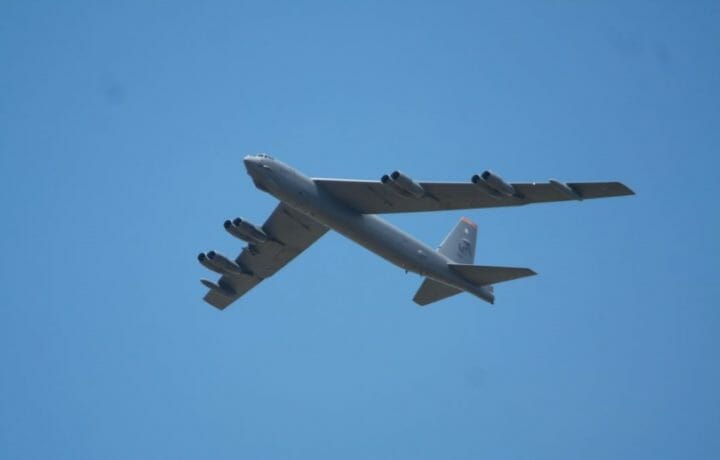The United States Air Force will continue to operate its fleet of Boeing B-52 Stratofortress strategic bombers into the 2040s and possibly beyond. Keeping the aging bombers flying has required significant upgrades. That has included new Rolls-Royce F-130 engines, the installation of Raytheon’s AESA AN/APG-79 radar as part of the addition of new navigation and communication systems, and even the installation of a privacy screen for the aircraft’s single lavatory.
This month, L3Harris Technologies was awarded a $34 million contract to modernize the cockpit as part of the Air Force’s Global Strike Command B-52 Quad Crew Program, which will consolidate the functions of the electronic warfare officer and navigator into a single position. Currently, the B-52 is operated by a five-person crew that includes two pilots, two navigators, and an electronic warfare officer. The upgrade will relocate the control and display unit panels to the navigator station.
“Transforming the iconic B-52 bomber into a more capable platform that operates through 2050 is a priority for our company,” said Ed Zoiss, president for Space and Airborne Systems at L3Harris. “This contract is an important step forward for the nation’s strategic bomber operators and their global strike mission.”
Further Analyses to be Conducted
In addition to upgrading the workstations, the effort with the customer-led Crew Station Working Group will include a series of analyses that will look at the bomber’s weight and balance, structural and electrical load analysis, and thermal cooling.
This will be used to identify any impact on the B-52 airframe and inform the modification kit design.
L3Harris is already quite familiar with the Stratofortress, and the company was awarded a nearly $40 million contract in 2021 to provide repair services to the AN/ALQ-172 radar warning receiver. It was the Original Equipment Manufacturer (OEM) of the AN/ALQ-172 systems for this aircraft fleet, and it has continued to support the U.S. Air Force evolve the aircraft’s capabilities from analog to digital solutions.
Smaller Crew – A Long Time Coming
The smaller crew size of the B-52 isn’t likely to have much impact on the Air Force, as just 58 of the Cold War-era bombers are still active with the 2nd Bomb Wing and 5th Bomb Wing. An additional 18 more are in reserve with the 307th Bomb Wing, while another dozen are in long-term storage at the Davis-Monthan Air Force Base (AFB) “Boneyard.”
The Air Force hasn’t announced how long it will take for the fleet to receive the upgrades, so it could be a while before all of the active B-52s are operated by a crew of four. However, modern bombers no longer need so many personnel to accomplish the mission.
The Rockwell B-1B Lancer’s crew also consists of four airmen, including a commander/pilot, copilot, offensive systems officer (OSO), and offensive systems officer (OSO) – while the Northrop Grumman B-2 Spirit is operated by two pilots. The now-in-development Northrop Grumman B-21 Raider will also be operated by a crew of two.
It is also worth noting that the Convair B-36 Peacemaker – the largest mass-produced piston-engined aircraft and the bomber that the B-52 replaced – originally called for a crew of 15, with most of the airmen operating the turrets to defend from enemy fighters. Even when the turrets were removed in subsequent models, the aircraft still required a crew of nine, which included commander/pilot, co-pilot, radar navigator, 1st navigator, 2nd navigator, 1st engineer, 2nd engineer, 1st radio operator, and 2nd radio operator.
A reconnaissance version of the B-36 Peacemaker required a crew of 22.
And unlike the B-52 and B-1 bombers, which have rudimentary lavatories, there were no such creature comforts on the B-36. By comparison, the B-2, which has been employed in flights lasting 20 hours or more, is equipped with a small lavatory, a bed, and even a microwave!
How the times have changed!



